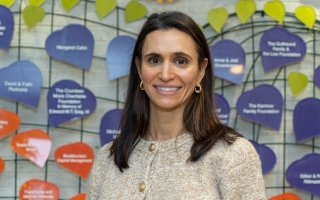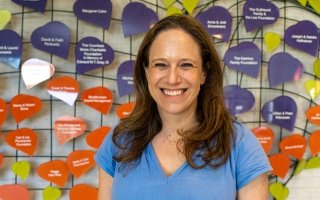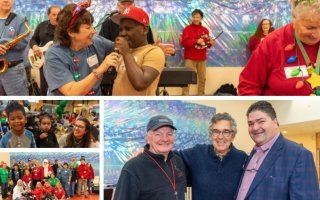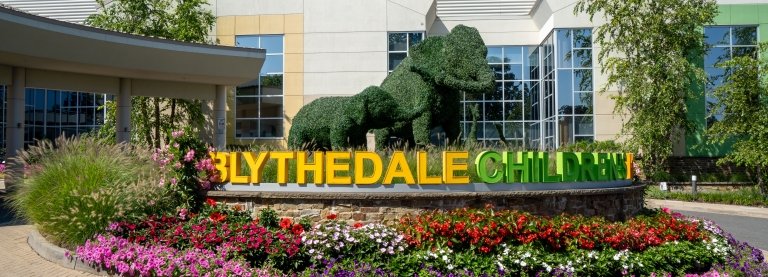Children Gain Strength and Function in Summer Upper Extremity Program
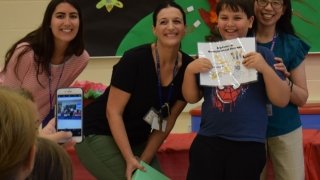
“Yes, I did it,” said Anthony Pastore of Harrison, N.Y., a longtime program participant. The spirited nine-year-old had just bowled a strike using his right hand. A difficult feat in and of itself, but for Anthony, it was even more challenging. He has hemiplegia/hemiparesis, a decreased use or weakness in that same right hand.
“Anthony had a lesion removed from his brain in 2009, when he was only one-and-a-half years old,” said Claudia Pastore, Anthony’s mom. She looked on lovingly as her son enjoyed his triumphant moment. “He stayed five-weeks as an inpatient at Blythedale, then transitioned to an Early Intervention program for two years and was treated by the Hospital’s wonderful therapists until he turned five. That’s when we entered him into the Upper Extremity Program.”
Anthony is one of 19 pediatric patients in the six-week program with hemiplegia/hemiparesis as a result of either cerebral palsy, traumatic brain injury, stroke or other diagnosis. All of them are training this summer with Blythedale’s expertly trained occupational therapists to increase motor functions and strength in their weaker hands.
“During the constrained therapy part, we use a mitt on the stronger hand to facilitate more spontaneous use of the weaker hand,” said Ka Lai (Kelly) Au, Upper Extremity Summer Program Supervisor and Senior Occupational Therapist. “In the bimanual activities, we encourage them to use both hands together to complete tasks.” She added, “The Occupational Therapy Department looks forward to this program every year because we’ve seen in the past the kind of impact we have on the children and how Blythedale is committed to serving those in the community with different needs.”
In addition to the program helping and teaching new skills to the children, it’s also an important research project for the Burke-Blythedale Pediatric Neuroscience Research Collaboration. Julie Knitter, Director of Blythedale’s Occupational Therapy Department, praised the endeavor. “We are fortunate to collaborate with our outstanding neuroscience researchers to analyze and share our results, as well as develop the scientific evidence to support and guide clinical practice.”
A typical day in the program includes activities like arts and crafts, sports and playground activities, sensory play, self-care activities and exercises to strengthen their weaker arm and improve range of motion. On this particular August day, the patient-students are not only bowling, but also learning how to dress themselves; taking the time to button and unbutton shirts with their affected hand, as well as put on other articles of clothing, without being helped. Important life skills that had previously been obstacles for Anthony and his parents until this summer’s program.
“It was always a struggle to work on his right arm. He was always smart enough to find another way to use just one hand,” said Anthony Pastore, Anthony’s dad.
“As parents, it’s hard to get your kids to do things they don’t want to do, but the therapists here, for whatever reason, magically make him, and the other kids, do so much more.”
Anthony gave his occupational therapist, Francine Pilla, an enthusiastic high-five with his right hand; the thrill of the strike still resonating on his smiling face. And then he was off to the next activity, putting together a puzzle of his favorite web-slinging superhero - Spider-Man.
Grasping the small pieces is tough for Anthony. He is aided with care by a program volunteer. All the while, Francine looks on.
“Every year we set goals that are new and a little bit more advanced than the goals in the past,” she said.
Anthony snaps two pieces of the puzzle together, on his own, and both arms go up into the air with excitement. Francine nods at Anthony in encouragement and says, “He has taught me the importance of working hard, never giving up, and to always smile and laugh during the day.”
